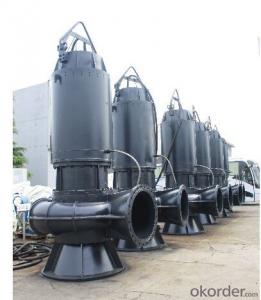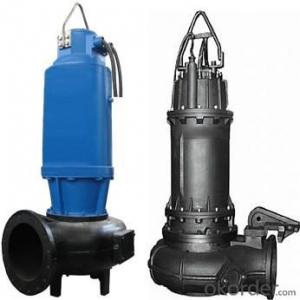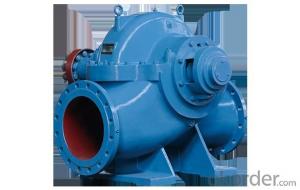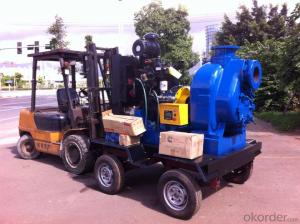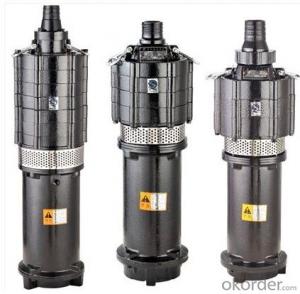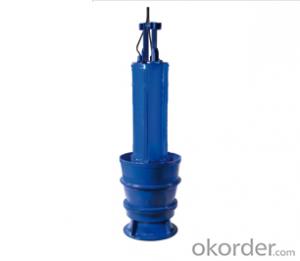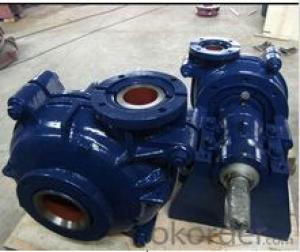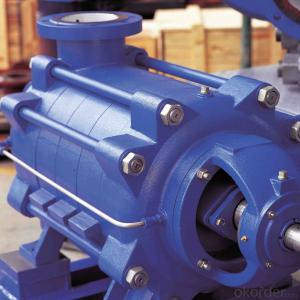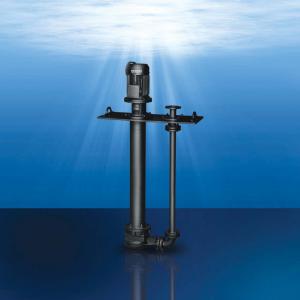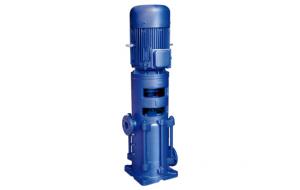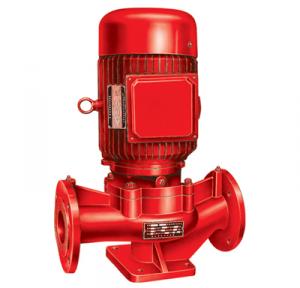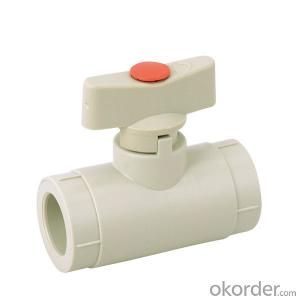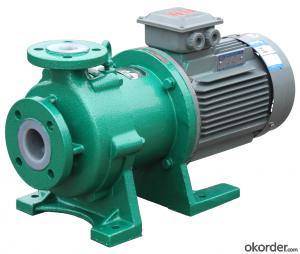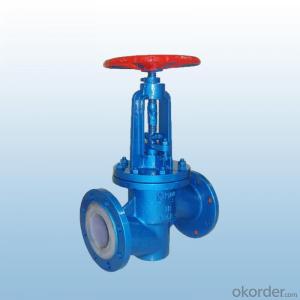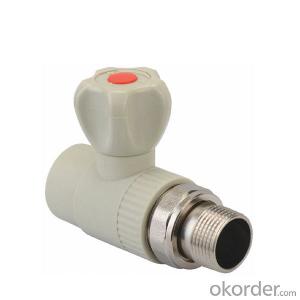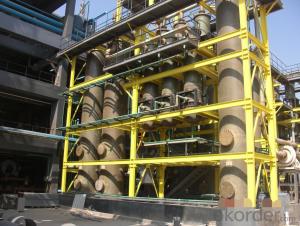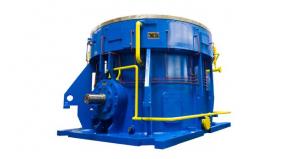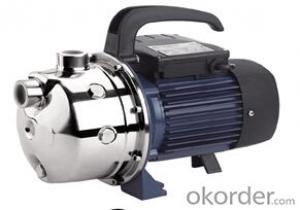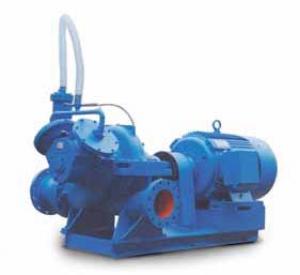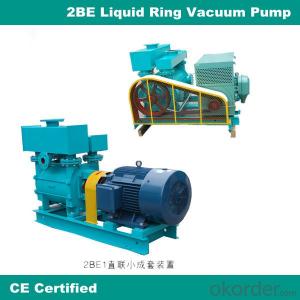WQ Series Vertical Sewage Submersible Centrifugal Pumps
- Loading Port:
- Shanghai
- Payment Terms:
- TT OR LC
- Min Order Qty:
- 1 unit
- Supply Capability:
- 2000 unit/month
OKorder Service Pledge
OKorder Financial Service
You Might Also Like
Product Description:
All details for WQ Series Sewage Submersible Pump:
1. Product Introduction
WQ series submersible sewage pump is mainly used for municipal work, industrial building, hotels, hospitals, civil air defense, mines, etc. It can be widely used in transfer waste water, rainwater and living water etc. which contains solid grains and various long fibers CNBM WQ series sewage submersible pump have many advantages, such as, hi-efficiency, circumvolution proof, blockage free, auto-coupling, hi-reliability and auto-control, etc.
2. Technical Performance
Discharge diameter: 50~600 mm
Capacity: 10~8000m³/h
Head: 5~60m
Power: 1.5~315kw
Diameter of pass solids: 20~145mm
3. Operation Condition
1). Rated Voltage: 380V(660V), Frequency: 50Hz, 3-phase AC.
2). Temperature of medium under 40ºC.
3). PH value: 4~10.
4). Volume ratio of solid in medium below 2%.
5). Density of medium should be lower than 12000kg/m³.
4. Structure Characteristic
WQ series submersible sewage pump is equipped with status indicator and protection device to ensure for pump safe and reliable operating.
1). The unique cable airproof is adopted, avoid leakage of cable.
2). Heat protector in stator assure of operating life of the motor.
3). The pump adopts outer recycling cooling design with motor power more than 18.5kw, which can keep the pump operating safely under the lowest water level.
4). A floating switch is installed at the bottom of motor chamber to protect the mechanical seal in the motor side.
5). The oil-water probe is installed at the up end of the oil chamber between pump and motor that can protect the mechanical seal in the side. If leakage occurs, the system will signalize and start protection.
6). Adopt perfect mechanical seal, the sealing material adopt tungsten carbide, silicon carbide and hard metal alloy, which can prevent the water from entering into the motor, and keep the operating reliable and safety.
7). The auxiliary impeller can balance the pressure outside of the mechanical seal, prevent the water entering into the oil chamber and prolong the life of the motor.
8). Unique impeller design, wide passage allow large solid and long fiber passing through freely, it features non-clog, convolve-proof and good passing ability.
9). The changeable wearing ring is installed between the impeller and the volute to keep the optimum operation conditions.
5. Impeller Design Characteristics
For the feculence pass freely, it must be widen the flowing passage of impeller, for the big pump, can used for double-vane, or three-vane, for the small pump, it used for single(double) flowing passage, like a bent pipe has same section, it has a good passing characteristic, avoid stop, convolve caused by slowing current possibly. The especially flowing passage of impeller, cooperate with logical volute, made the paper, soft goods, garbage bag and other material in sewage can passing freely and the pump have no vibration in the course of running-in and load through the impeller balance between dynamic and static state.
6. FAQ
(1)Can your pumps mount Eff.1 motors
Currently, only on request though this will shortly be a CNBM standard.
(2)Are your pumps protected against dry running?
No, unprotected centrifugal pumps are not generally designed for dry running. It is important to give us or your dealer as much information as possible about the system in which the pump is used. Inlet pressure, the type of liquid to be pumped, together with relative density, viscosity and temperature, for example, are required in order to allow CNBM to recommend the right pump with the right gaskets for a long operating lifetime.
(3)How can I get trained on CNBM products?
Yes, we provide training courses in our factory (products, general and specific pump technology, hydraulics, and practical applications). Please consult your sales manager or get in touch with our headquarters for more information.
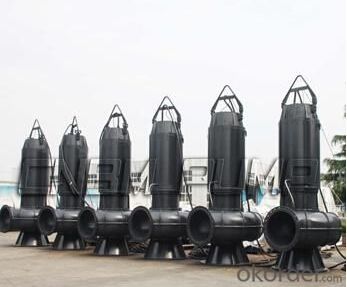
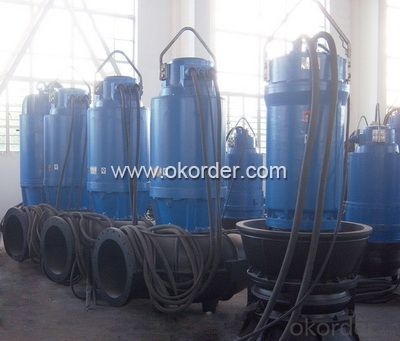
- Q:What are the application areas of pumps?
- Performance range from the pump to see giant pump flow up to hundreds of thousands of cubic meters per hour, while the micro pump flow per hour in a few milliliters; pump from atmospheric pressure up to 19.61Mpa (200kgf/cm2); the lowest temperature of the liquid is transported up to -200 DEG C, up to 800 DEG C. Pumps carry a wide variety of fluids, such as water (clean water, sewage, etc.), oils, acid and alkaline solutions, suspensions, and liquid metals.In the chemical and oil sector production, raw materials, semi-finished products and finished products are mostly liquid, and semi-finished and finished products to raw materials, need to go through a complex process, to pump and provide transportation of liquid chemical reaction of the pressure and flow in the process, in addition, the device also used in many pumps to adjust the temperature.In agricultural production, the pump is the main irrigation and drainage machinery. Rural areas in our country are vast and vast, and a large number of pumps are needed every year in rural areas. Generally speaking, agricultural pumps account for more than half of the total output of pumps.Pumps are also the most widely used equipment in the mining and metallurgical industries. The mine needs pumping and drainage. In the process of ore dressing, smelting and rolling, the pump needs water to supply water first.
- Q:How to calculate the motor power of metering pump?
- Two Hydraulic power, metering pump rated flow (L/H) X, maximum pressure (Barg) / 36000 = kw
- Q:What's the meaning of the pump head in the water pump, please advise, thank you
- The pump head of the centrifugal pump refers to the shell that contains the impeller and impeller, and also includes the shaft part that drives the impeller. It can be used as the part of the motor and shaft coupling and the base.
- Q:No negative pressure water supply equipment, both the main pump and auxiliary pump, power is not the same, how to choose the control cabinet?
- Non negative pressure water supply equipment can be divided into non negative pressure tank and box type non negative pressure compensation device, steady flow tank type non negative pressure water supply equipment is the negative pressure tank, pressure tank can eliminate the negative effect of network equipment, is equipped with a vacuum suppressor and water protection box; non negative pressure water supply equipment has the advantages of simple device is a water tank with the boost voltage stabilizing device of complex box at the same time with no negative pressure tank.The tank type non negative pressure water supply equipment adopts vertical multistage centrifugal pump. This kind of pump is low noise and high efficiency. Such as CDL series and imported CR seriesOrdinary box type non negative pressure water supply equipment can use multi-stage centrifugal pump, also can use stainless steel submersible pump, submersible pump costs will be lower, but the maintenance costs will be high.
- Q:Types and differences of pumps
- Classification and working principle of pump by structureClassification of pumpsInvolved pump standard product types are also very much, a centrifugal pump, metering pump, screw pump, reciprocating pump, hydraulic pump, submersible pump, oil pump, water pump, pressure test pump, vortex pump, cryogenic pump, vacuum pump, roots pump, molecular pump, gear pump, mud pump, corrosion-resistant pump deep well pump, water pump, mixed flow pump, axial flow pump, boiler feedwater pump, liquid pump, injection pump, chemical pump, pump plugging and no leakage pump, plastic pump, fire pump and so on, there are many. Its name is divided according to some conventional classification methods such as pump vane pump volume, pump etc., some are divided by purpose such as sewage pump, pump and other health, some names are more random as diffusion pump, liquid nitrogen pump. As long as the production of this product, with standard requirements, through a certain application and approval procedures may produce a new The standard, but sometimes the content also has a repeated cross, quite. The domestic and foreign standards, the domestic standard is more than the number of foreign standards. In general, such as centrifugal pumps are widely used, the production history of the pump more standard (total standard centrifugal pump up to more than 100). As new standard pump leakage pump this rapid development is relatively small. This paper introduces the structure and working principle of the pump according to the classification of the
- Q:Common failure treatment of piston pump
- x09x09 (3) no connecting key on pump shaft or motor shaft1) break2) missing x091) replace key2) patch keyx09x09 (4) pump internal slide vice stuck1) the clearance is too small2) parts accuracy is poor, assembly quality is poor, gear and shaft coaxial deviation is too large; plunger head clamping; blade perpendicularity difference; rotor pendulum difference is too big, rotor slot has wound or blade has scar, force after fracture and stuck
- Q:What are the important parameters of the pump?
- Pump parametersFlow rate QFlow is the amount of liquid (volume or mass) that is pumped out in unit timeVolume flow is expressed in Q units: m3/s, m3/h, l/s, etc.
- Q:Is the flow meter in front of the pump or after the pump?
- After the flowmeter is placed in the pump, it is better to add a pressure tank or a buffer tank, so that the flow meter will work better
- Q:What is a positive displacement pump? He Weizheng displacement?
- The principle and structure of displacement pumps are similar to those of hydraulic motors. Positive displacement is the pump outward to provide flow and pressure, that is, conventional pumps. A negative displacement pump is a hydraulic motor that rotates by external pressure and flow
- Q:How to maintain and repair the booster pump of pipeline pump?
- Installation and use1. use rubber washer and bolt to connect the pump flange at both ends and the pipe flange. In order to use and maintenance convenience, in the pump inlet and outlet pipelines should be installed with a regulating valve.2. open the inlet control valve, so that water into the pump, in order to keep the cavity filled with liquid (otherwise it will damage the seal), close the outlet valve.3. turn on the power and make sure the correct turn.4. make sure the pump starts and runs after turning.5. adjust the opening of the outlet valve so that the pump runs near the design point, depending on the rated flow and lift of the pump. [for this reason, it is better to place a pressure gauge near the outlet flange). Note: this pump is strictly prohibited to run without water, so as not to damage the seal.
1. Manufacturer Overview |
|
|---|---|
| Location | |
| Year Established | |
| Annual Output Value | |
| Main Markets | |
| Company Certifications | |
2. Manufacturer Certificates |
|
|---|---|
| a) Certification Name | |
| Range | |
| Reference | |
| Validity Period | |
3. Manufacturer Capability |
|
|---|---|
| a)Trade Capacity | |
| Nearest Port | |
| Export Percentage | |
| No.of Employees in Trade Department | |
| Language Spoken: | |
| b)Factory Information | |
| Factory Size: | |
| No. of Production Lines | |
| Contract Manufacturing | |
| Product Price Range | |
Send your message to us
WQ Series Vertical Sewage Submersible Centrifugal Pumps
- Loading Port:
- Shanghai
- Payment Terms:
- TT OR LC
- Min Order Qty:
- 1 unit
- Supply Capability:
- 2000 unit/month
OKorder Service Pledge
OKorder Financial Service
Similar products
New products
Hot products
